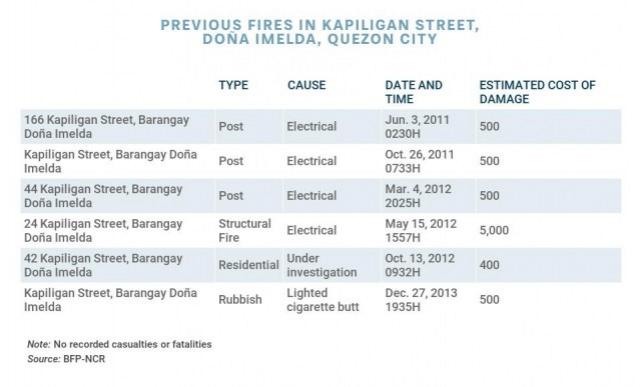Fires regularly happen in three areas in QC, Manila
At least four informal settler areas in Metro Manila were razed by fires during the holiday season, leaving at least 742 families homeless.
In three of these areas, fires are a regular occurrence. In NIA Road, Barangay Pinyahan, Quezon City, at least eight fires were reported since 2011. At least 10 fires were reported in Baseco Compound in Port Area, Manila. At least six fires were reported in Kapiligan Street in Barangay Doña Imelda, also in Quezon City.
Firefighters have insisted that they have been conducting fire prevention awareness campaign in the barangays. This may have become useless in the end as residents usually panic when fire strikes, a fire investigator said.
“Bago pa mag-holiday naglalabas na kami ng [fire prevention] tarpaulin. Nagbibigay na kami ng information sa mga barangay. May mga seminar din kami kinu-conduct. Pero yun nga, kahit siguro nagkaroon ng seminar, 'pag actual sunog na, natataranta na,” said Quezon City Fire Department Arson Investigator Marcus Mondia. “Sa halip na patayin ang sunog, siguro sa taranta, tatakbo na lang palabas ng bahay.”
Bureau of Fire Protection firefighters in Metro Manila responded to at least 5,031 fires last year. This is equivalent to almost 14 incidents of fire every day. The figure is expected to increase as some Metro Manila districts have yet to file final figures to the regional office.
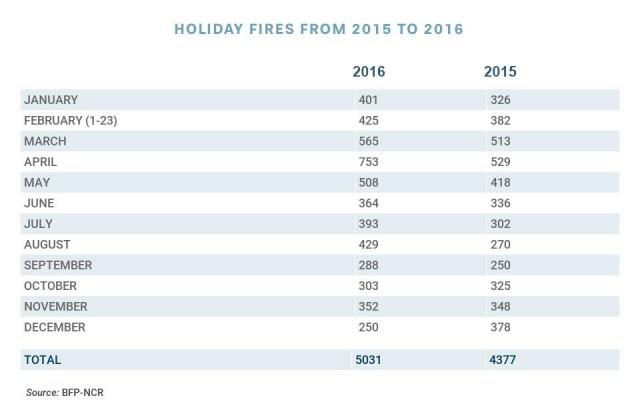
More than a fifth of the fires in Metro Manila in 2015 and 2016 came from Quezon City, the most populous city in the country and biggest city in the National Capital Region in terms of land area. The number of fires in the city also increased in 2016 compared to 2015.
BFP-NCR data also showed that the month of December has the lowest number of fires this year. Still, some of the fires that happened near the holidays are nonetheless destructive.
The biggest fire during the holidays, which occurred on the night of December 27, left one dead and three injured. That fire that hit a slum area along NIA Road reached as high as Task Force Delta, a BFP term which means it poses hazard to nearby establishments and requires the metro’s regional fire officials to respond. Some 643 families became homeless.
On that same day, another fire hit another slum area in Quezon City. That fire in Doña Imelda affected 27 families.
On New Year’s Eve, a fire hit Pamasa Village in Barangay Sta. Lucia in Quezon City, leaving 45 families homeless.
Mondia said the holiday fires may be attributed to the increased activity in homes. In informal settler areas, overloading of electrical outlets may be one cause of fire. “May videoke sa bahay, may aircon [pero isa lang ang socket]. Nasa lifestyle nila. Yung activity nila would be sa bahay. Dito tumataas ang risk ng overloading at sunog.”
A few days before Christmas Day, on December 22, a fire stuck the informal settler area in Baseco Compound in Port Area in Manila. Some 27 families living in Row 9 of the compound were affected.
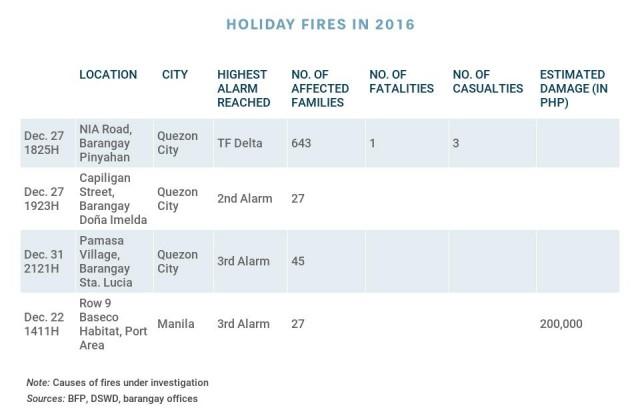
Firefighters had responded to at least 10 fires in Baseco Compound since 2011. Six of these fires razed down the shanties that are homes to the informal settlers there.
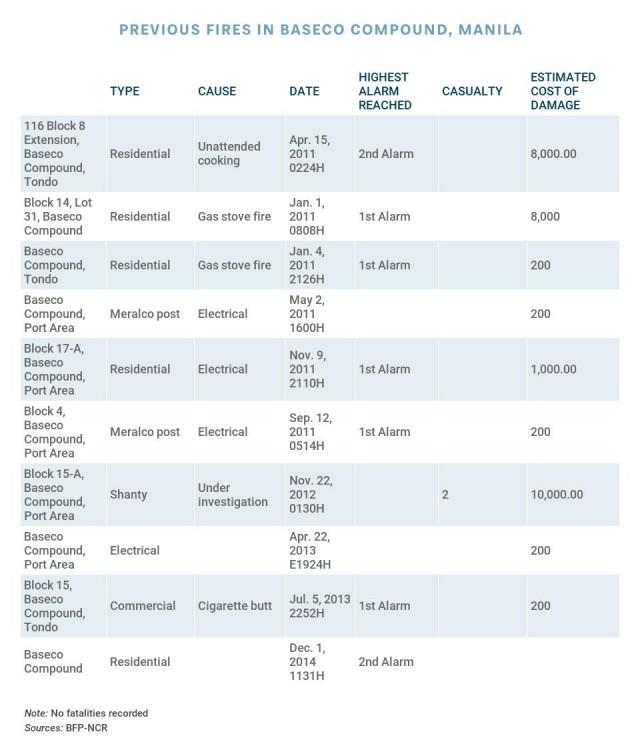
There were at least nine reported fire incidents along NIA Road since 2011. Three of those fires left residents homeless. The November 2011 fire claimed four lives and affected 1,000 families.
Mondia said the NIA Road, like the other informal settler areas, have houses that are mostly made of light materials like plywood, lawanit and styrofoam. “Meron pa nga tarpaulin lang ang dingding. Talagang fire hazards kaya in seconds lang lumalaki na agad ang apoy,” he said.
It didn’t help that responding fire trucks failed to arrive on time because of traffic. Also, fire trucks cannot pass through the narrow alleys of the slum area, Mondia said.
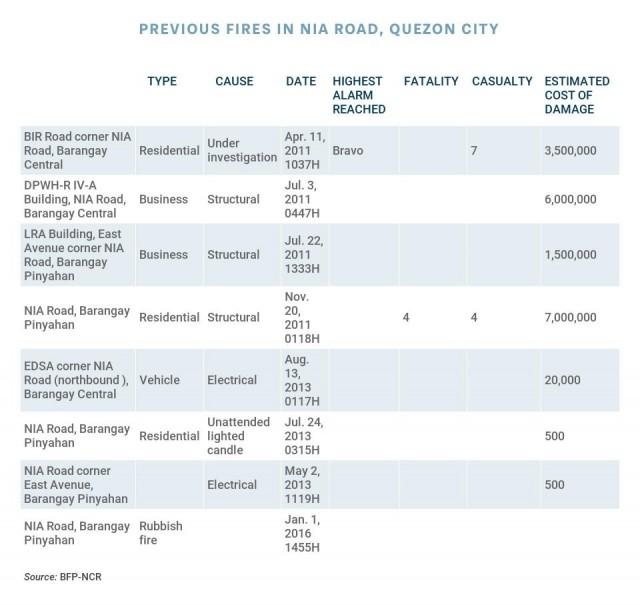
At least six fires were reported in Kapiligan Street in Barangay Doña Imelda in Quezon City. In most cases, electrical posts or rubbish were burnt down. In October 2012, fire broke in a residential establishment in the area.
Mondia said Kapiligan Street also has narrow passageways and alleys blocked by trash that impede fire trucks.
Mondia said fires in this area were usually caused by overloaded electrical sockets.
